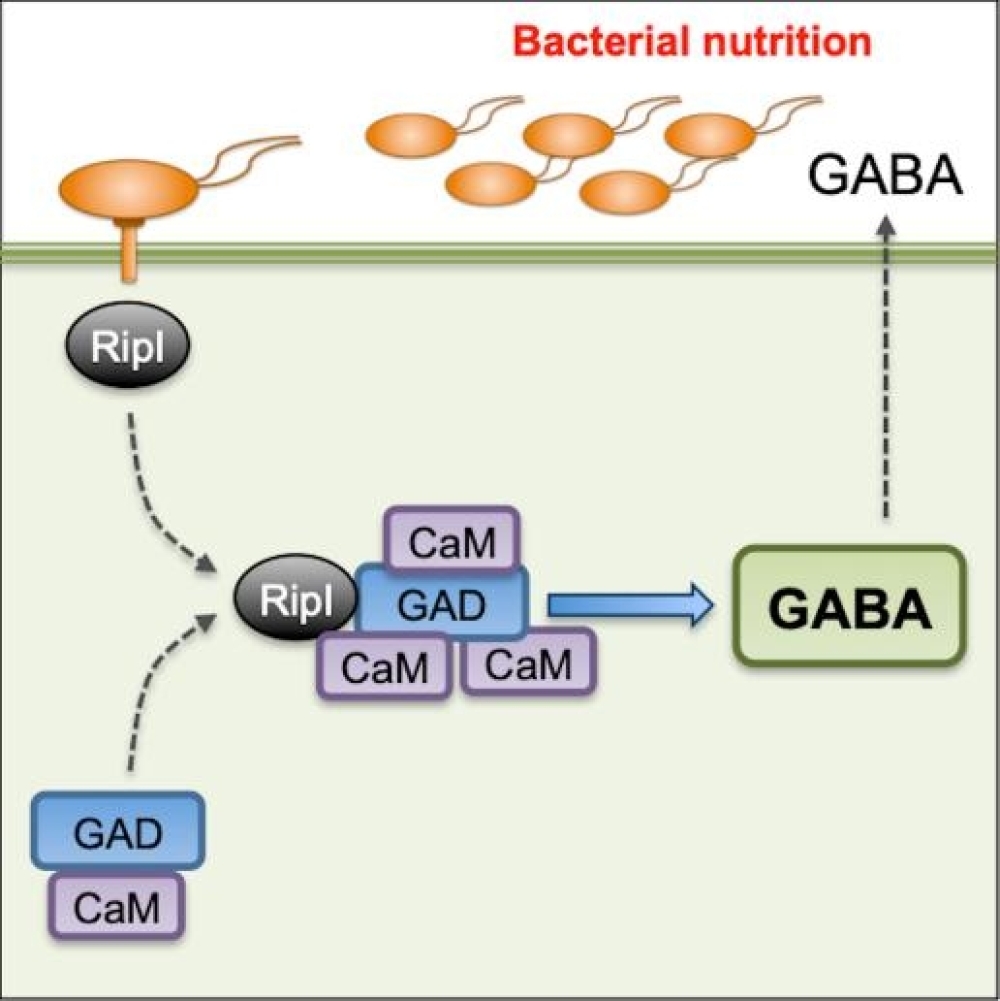New study shows how a bacterial pathogen manipulates plant metabolism to support pathogen nutrition
Scientists have discovered a novel molecular mechanism by which Ralstonia solanacearum, the causal agent of bacterial wilt disease, manipulates plant metabolism to support bacterial nutrition during infection.
Plant diseases caused by bacterial pathogens pose an important threat to food security worldwide. Ralstonia solanacearum is the causal agent of the bacterial wilt disease, which affects important crops such as potato, tomato, tobacco, banana, pepper and eggplant, among others, being responsible for enormous economic losses.
Bacterial pathogens inject effector proteins inside plant cells to manipulate the plant immune system and shut down defence responses. Subsequently, extensive bacterial proliferation ends up in the development of disease. However, how bacterial pathogens obtain nutrients to support the fast and massive growth of the bacterial population inside the plant remains mostly unknown.
Recently, a study led by Dr. Alberto Macho at the Shanghai Center for Plant Stress Biology/ CAS Center for Excellence in Molecular Plant Sciences discovered that Ralstonia secretes an effector protein, named RipI, which manipulates plant metabolism to enhance the production of GABA in plant cells. GABA is an important neurotransmitter in animal cells, and also plays a signalling role in plants. However, Ralstonia can efficiently use GABA as a nutrient, and this study showed that the enhancement of GABA production and GABA consumption by Ralstonia contributes importantly to the development of disease. This work was comprised in the projects of the PhD student Liu Xian and the postdoctoral researcher Gang Yu, and was recently published in Cell Host & Microbe.
This study also uncovered the molecular mechanism of this metabolic manipulation. In plant cells, RipI interacts with glutamate decarboxylases (GADs), which are the main enzymes responsible for the production of GABA. GADs are activated by the calcium sensor Calmodulin. RipI hijacks this regulation mechanism and enhances the interaction between GADs and Calmodulin, therefore enhancing GABA production. This reveals a novel strategy employed by bacteria to take advantage of the sensitive regulation of a plant metabolic pathway to produce a nutrient for the pathogen.
Interestingly, mutant plants with reduced GAD activity are more resistant to bacterial wilt disease, revealing GADs as susceptibility factors, and raising the possibility of performing targeted editing of GAD enzymes to enhance disease resistance in plants.
This study has been funded by the Chinese Academy of Sciences and the National Natural Science Foundation of China.

Link to the article: https://www.cell.com/cell-host-microbe/fulltext/S1931-3128(20)30399-1
Contact:
Prof. Alberto Macho
Emal: alberto.macho@psc.ac.cn
Shanghai Center for Plant Stress Biology, CAS/ CAS Center for Excellence in Molecular Plant Sciences